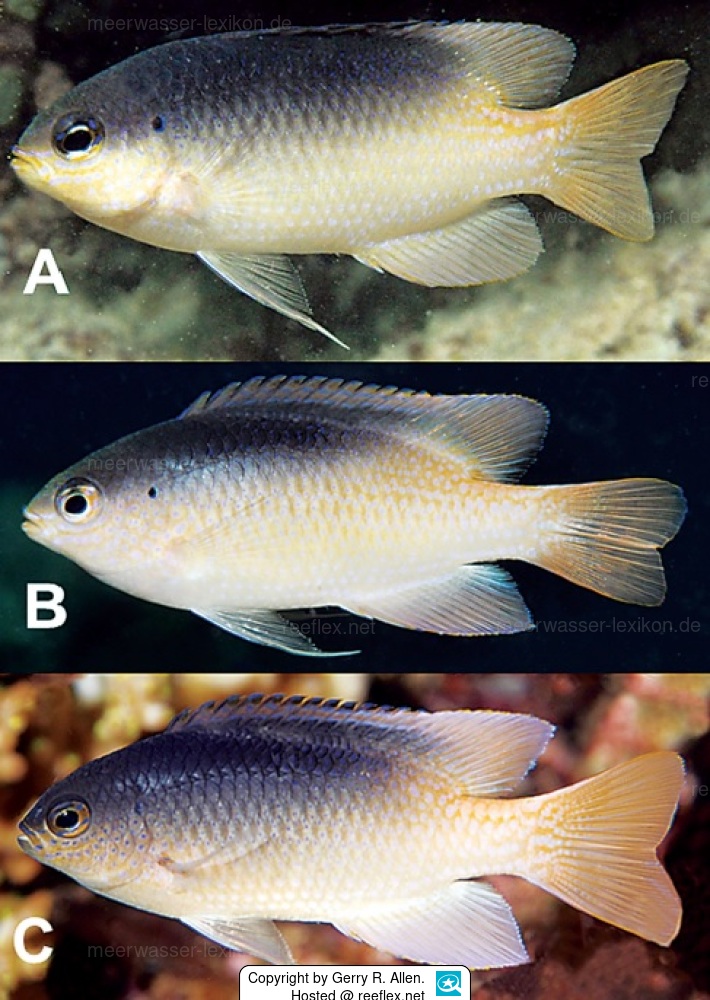Info
Allen, Erdmann, Kurniasih 2015
Very special thanks for the first photos of this new damslefish to Dr. Gerry R Allen and Dr. Mark Erdmann, Australien.
Chrysiptera caesifrons is described from the Raja Ampat Islands (West Papua Province), Indonesia, Papua, New Guinea, Vanuatu, New Caledonia and the Great Barrier Reef of Australia.
The habitat consists of rocky substrates, frequently close to shore, often in gullies just below the surge zone at depths of about 1–6 meters. It generally occurs solitarily or in small, loose groups.
Classification: Biota > Animalia (Kingdom) > Chordata (Phylum) > Vertebrata (Subphylum) > Gnathostomata (Superclass) > Pisces (Superclass) > Actinopteri (Class) > Perciformes (Order) > Labroidei (Suborder) > Pomacentridae (Family) > Chrysiptera (Genus) > Chrysiptera caeruleolineata (Species)
Very special thanks for the first photos of this new damslefish to Dr. Gerry R Allen and Dr. Mark Erdmann, Australien.
Chrysiptera caesifrons is described from the Raja Ampat Islands (West Papua Province), Indonesia, Papua, New Guinea, Vanuatu, New Caledonia and the Great Barrier Reef of Australia.
The habitat consists of rocky substrates, frequently close to shore, often in gullies just below the surge zone at depths of about 1–6 meters. It generally occurs solitarily or in small, loose groups.
Classification: Biota > Animalia (Kingdom) > Chordata (Phylum) > Vertebrata (Subphylum) > Gnathostomata (Superclass) > Pisces (Superclass) > Actinopteri (Class) > Perciformes (Order) > Labroidei (Suborder) > Pomacentridae (Family) > Chrysiptera (Genus) > Chrysiptera caeruleolineata (Species)







 Dr. Gerry R. Allen, Australien
Dr. Gerry R. Allen, Australien









































